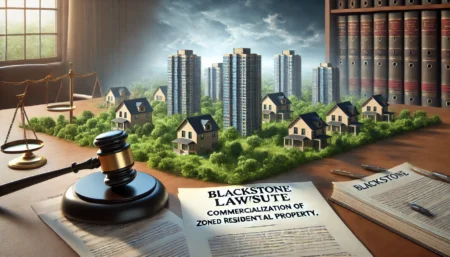In this article, we are providing all the information about the Berkeley Asbestos Legal Question. As you walk through the streets of Berkeley, the vibrant cityscape may captivate your attention, but hidden within its buildings lies a silent threat – asbestos. This once heralded mineral for its fire-resistant properties has now become synonymous with danger and legal complexities.
In this article, we delve into the intricate web of asbestos exposure in Berkeley, shedding light on the historical context, legal implications, and crucial questions that surround this issue. Join me as we navigate through the maze of information to understand the gravity of asbestos exposure in Berkeley and empower ourselves with knowledge to protect our health and rights in this evolving landscape.
A. Brief background on asbestos exposure in Berkeley
Berkeley, like many other cities across the United States, has a history of asbestos exposure that has raised concerns among residents and legal experts alike. Asbestos, a naturally occurring mineral known for its heat resistance and durability, was widely used in various industries and construction projects in Berkeley during the mid-20th century. Unfortunately, the health risks associated with asbestos exposure were not fully understood at the time, leading to countless individuals being unknowingly exposed to this hazardous substance.
The repercussions of asbestos exposure in Berkeley have been significant, with many individuals developing serious health conditions such as mesothelioma, lung cancer, and asbestosis as a result. The legacy of asbestos use in Berkeley continues to impact current residents and workers who may still be at risk of exposure due to aging buildings and infrastructure containing asbestos-containing materials. Understanding the historical context of asbestos use in Berkeley is crucial for navigating the legal complexities surrounding asbestos-related cases and seeking justice for those affected by this harmful substance.
B. An overview of the issues and legal ramifications related to asbestos cases
Asbestos cases in Berkeley present complex legal implications that require a thorough understanding of the laws and regulations surrounding asbestos exposure. Individuals who have been exposed to asbestos and subsequently developed related health issues may be entitled to seek compensation through legal avenues. The key legal questions often revolve around determining liability, proving negligence, and navigating the intricate web of statutes of limitations that vary from state to state.
Moreover, asbestos cases can involve multiple parties, including manufacturers, contractors, property owners, and even government entities. Each party’s level of responsibility for the exposure must be carefully assessed to determine the appropriate course of legal action. Additionally, the evolving landscape of asbestos litigation and regulations adds another layer of complexity to these cases. It is crucial for individuals affected by asbestos exposure in Berkeley to seek legal counsel with expertise in this area to ensure their rights are protected and they receive fair compensation for their suffering.
What are Berkeley Asbestos Legal Questions
Berkeley Asbestos Legal Question requires understanding the complex legal issues surrounding asbestos exposure and the ensuing health effects. The following are ten frequently asked questions concerning the Berkeley Asbestos lawsuit and the responses to them:
Question: What are the legal options available to Berkeley residents diagnosed with asbestos-related illnesses?
Answer: Berkeley residents facing asbestos-related illnesses can explore legal avenues such as filing lawsuits against negligent parties responsible for their exposure to asbestos.
Question: How can individuals in Berkeley determine if they have a valid asbestos legal case?
Answer: Berkeley residents suspecting asbestos exposure-related health issues should consult with experienced asbestos attorneys who can assess their situation and advise on the viability of a legal case.
Question: What factors are crucial in determining the success of an asbestos legal claim in Berkeley?
Answer: Success in asbestos legal claims in Berkeley often hinges on factors such as evidence of asbestos exposure, the extent of harm suffered, and the ability to identify and hold accountable the responsible parties.
Question: Is there a statute of limitations for filing an asbestos lawsuit in Berkeley?
Answer: Yes, Berkeley, like other jurisdictions, has a statute of limitations for filing asbestos lawsuits. It’s important for affected individuals to take legal action within the specified timeframe, typically starting from the date of diagnosis or discovery of asbestos exposure.
Question: How long does it usually take to resolve an asbestos legal case in Berkeley?
Answer: The timeline for resolving asbestos legal cases in Berkeley can vary widely based on factors such as case complexity, defendant cooperation, and court schedules. Some cases may settle relatively quickly, while others may take years to reach a resolution.
Question: Can Berkeley residents affected by asbestos-related illnesses pursue compensation for their medical expenses and other losses?
Answer: Yes, Berkeley residents diagnosed with asbestos-related illnesses have the right to seek compensation for medical bills, lost wages, pain and suffering, and other damages through legal channels such as lawsuits or asbestos trust funds.
Question: What role do Berkeley-based asbestos attorneys play in helping victims navigate legal proceedings?
Answer: Berkeley-based asbestos attorneys provide invaluable assistance to victims by offering legal guidance, representing them in court, negotiating settlements, and ensuring their rights are protected throughout the legal process.
Question: Are there specialized medical resources available for asbestos-related illnesses in Berkeley?
Answer: Yes, Berkeley boasts medical facilities and specialists equipped to diagnose and treat asbestos-related illnesses. Patients can access comprehensive care and support tailored to their specific needs.
Question: What types of compensation can Berkeley residents seek through asbestos legal action?
Answer: Berkeley residents affected by asbestos exposure can seek compensation for various damages, including medical expenses, lost income, pain and suffering, and punitive damages in cases involving gross negligence.
Question: How can Berkeley residents affected by asbestos exposure connect with legal resources and support groups?
Answer: Berkeley residents impacted by asbestos exposure can reach out to local law firms specializing in asbestos litigation or seek support from organizations and groups dedicated to assisting asbestos victims, providing guidance, resources, and emotional support.
Understanding Asbestos Exposure
Asbestos exposure is a serious health concern that has affected many individuals in Berkeley and beyond. Because of its toughness and resistance to fire, asbestos is a naturally occurring mineral that was frequently employed in building materials. However, there could be health dangers if asbestos-containing objects are broken or disturbed because microscopic fibers could be released into the air and inhaled. These fibers can become lodged in the lungs and other organs, causing diseases such as asbestosis, lung cancer, and mesothelioma.
In Berkeley, common sources of asbestos exposure include older buildings constructed before the 1980s when asbestos use was more prevalent. Renovation or demolition activities in these buildings can disturb asbestos-containing materials, putting workers and residents at risk of exposure. It is crucial for individuals to be aware of the potential dangers of asbestos exposure and take necessary precautions to protect themselves and their loved ones from harm.
A. Definition of asbestos and its health risks
Asbestos is a naturally occurring mineral that was once widely used in various industries due to its heat resistance and durability. Prolonged asbestos fiber exposure, however, can be extremely dangerous to one’s health. Tiny fibers that are easily breathed or consumed can be released into the air when asbestos-containing objects are destroyed or disturbed. After getting stuck in the lungs, these tiny fibers have the potential to cause long-term inflammation and scarring.
The health risks associated with asbestos exposure are significant and can lead to serious conditions such as asbestosis, lung cancer, and mesothelioma. Asbestosis is a chronic lung disease characterized by fibrosis of the lung tissue, which can cause breathing difficulties and permanent damage to the respiratory system. Lung cancer linked to asbestos exposure typically develops after years of inhalation of asbestos fibers and is often aggressive in nature. Mesothelioma is a rare but deadly form of cancer that affects the lining of the lungs, abdomen, or heart and is almost exclusively caused by asbestos exposure. Understanding these health risks is crucial in recognizing the importance of addressing asbestos exposure concerns promptly and seeking legal guidance when necessary.
B. Common sources of asbestos exposure in Berkeley
In Berkeley, like many other cities across the country, asbestos exposure can occur in various settings and from different sources. One common source of asbestos exposure in Berkeley is older buildings constructed before the 1980s when asbestos was widely used in construction materials. Renovation or demolition of these older structures can release asbestos fibers into the air, posing a risk to workers and residents nearby.
Additionally, industrial sites such as factories or refineries in Berkeley may have used asbestos-containing materials in their operations, potentially leading to exposure for workers and surrounding communities. It’s crucial for individuals living or working in Berkeley to be aware of these potential sources of asbestos exposure and take necessary precautions to protect themselves from the associated health risks. Understanding where asbestos might be present can help prevent future cases of exposure and related health issues.
C. Health conditions associated with asbestos exposure
Asbestos exposure is a serious health concern that can have devastating consequences on individuals who come into contact with this harmful mineral. When asbestos fibers are inhaled or ingested, they can become lodged in the lungs or other organs, leading to a range of health conditions. The most well-known health condition associated with asbestos exposure is mesothelioma, a rare and aggressive form of cancer that primarily affects the lining of the lungs, abdomen, or heart. Other respiratory conditions linked to asbestos exposure include asbestosis, a chronic lung disease characterized by scarring and inflammation of lung tissue, as well as lung cancer.
It is crucial for individuals who may have been exposed to asbestos to be aware of these potential health risks and seek medical attention if they experience symptoms such as breathing difficulties, chest pain, chronic coughing, or unexpected weight loss. Early detection and treatment can significantly improve outcomes for those affected by asbestos-related health conditions. If you believe you have been exposed to asbestos and are experiencing any concerning symptoms, it is important to consult with a healthcare provider promptly to discuss your concerns and explore appropriate diagnostic and treatment options.
Legal Landscape in Berkeley
In Berkeley, the legal landscape surrounding asbestos exposure is complex and multifaceted. Asbestos-related cases in Berkeley are typically handled through civil litigation, where individuals who have been harmed by asbestos exposure seek compensation for their injuries. The legal system in Berkeley provides avenues for holding responsible parties accountable for exposing individuals to asbestos and failing to provide adequate warnings or protection.
Courts in Berkeley consider various factors when determining liability in asbestos cases, such as the extent of exposure, the timeframe of exposure, and the specific health conditions that have resulted from the exposure. It is crucial for individuals affected by asbestos exposure to seek legal counsel from experienced attorneys who specialize in handling these types of cases. Navigating the legal landscape in Berkeley requires a deep understanding of local regulations, laws, and precedents related to asbestos exposure to ensure that justice is served for those impacted by this harmful substance.
A. Regulations and laws related to asbestos exposure in Berkeley
In Berkeley, like many other cities across the United States, regulations and laws related to asbestos exposure are in place to protect individuals from the harmful effects of this toxic mineral. The city of Berkeley follows both state and federal regulations regarding asbestos, with additional local ordinances that may apply. These regulations typically govern the handling, removal, and disposal of asbestos-containing materials to ensure they are managed safely and do not pose a risk to public health.
One key regulation in Berkeley is the requirement for property owners to conduct asbestos surveys before any renovation or demolition activities take place. This survey helps identify the presence of asbestos-containing materials so that proper precautions can be taken to prevent exposure. Additionally, there are specific guidelines for how asbestos should be removed and disposed of to minimize the risk of releasing fibers into the air. Understanding these regulations is crucial for anyone dealing with potential asbestos exposure in Berkeley, as non-compliance can lead to serious legal consequences and health risks.
B. Overview of the legal process for filing an asbestos-related lawsuit
Navigating the legal process for filing an asbestos-related lawsuit in Berkeley can be complex and overwhelming, but understanding the key steps involved can help individuals pursue justice effectively. Speaking with an accomplished asbestos lawyer who handles situations similar to this is an essential first step. Your attorney will assess your situation, gather relevant evidence such as medical records and work history, and determine the best course of action for your case.
Once you decide to move forward with a lawsuit, your attorney will file a complaint on your behalf against the responsible parties, which could include manufacturers, employers, or property owners who exposed you to asbestos. The next phase involves pre-trial discovery where both parties exchange information and evidence related to the case. This process may include depositions, document requests, and expert testimonies. Ultimately, if a settlement cannot be reached, your case may proceed to trial where a judge or jury will determine the outcome based on the presented evidence. Throughout this legal journey, having a knowledgeable attorney by your side can provide you with guidance and support to navigate the complexities of an asbestos-related lawsuit successfully.
C. Key considerations for individuals seeking legal action
When considering legal action related to asbestos exposure in Berkeley, individuals must keep several key considerations in mind to navigate the process effectively. Firstly, it is crucial to gather all relevant medical records and documentation that can establish a clear link between asbestos exposure and any resulting health conditions. This evidence will play a significant role in supporting your case and seeking compensation for damages.
Additionally, seeking legal representation from experienced asbestos attorneys who specialize in handling such cases is essential. These professionals have the expertise and knowledge needed to navigate the complex legal landscape surrounding asbestos exposure claims. They can guide you through the entire process, from filing the lawsuit to negotiating settlements or representing you in court if necessary. Lastly, understanding the statute of limitations for filing an asbestos-related lawsuit in Berkeley is vital as missing this deadline could result in losing your right to seek legal recourse. By being well-informed and having the right support system in place, individuals can pursue their legal rights effectively when dealing with asbestos-related issues in Berkeley.
Recent Developments and Case Studies
In recent years, Berkeley has seen a surge in asbestos-related cases that have brought significant attention to the issue of asbestos exposure and its legal implications. One notable case involved a group of former industrial workers who were exposed to asbestos while working at a manufacturing plant in Berkeley. The workers developed serious health complications due to prolonged exposure to asbestos fibers, leading them to file a lawsuit against the company for negligence.
Another case that garnered widespread media coverage was the lawsuit filed by residents of an apartment building in Berkeley where asbestos contamination was discovered during renovations. The residents suffered from respiratory problems and other health issues as a result of the exposure, prompting them to seek legal recourse against the property owner for failing to disclose the presence of asbestos.
These cases have shed light on the importance of strict regulations and enforcement measures regarding asbestos handling and removal in Berkeley. They have also underscored the need for property owners and employers to take proactive steps in ensuring the safety of individuals who may be at risk of asbestos exposure. As we delve deeper into these case studies, we will uncover the outcomes and implications they have had on shaping the legal landscape surrounding asbestos in Berkeley.
A. Highlight recent asbestos-related cases in Berkeley
In recent years, Berkeley has seen a surge in asbestos-related cases that have raised concerns and sparked legal debates within the community. One notable case involved a local school district where asbestos was discovered in several school buildings, leading to widespread health and safety concerns among students, teachers, and parents. The handling of this situation by the school district and the subsequent legal actions taken by affected parties shed light on the complexities of dealing with asbestos contamination in public spaces.
Another significant case that garnered attention in Berkeley was a lawsuit filed by former employees of a construction company who were exposed to asbestos while working on a renovation project. The workers alleged negligence on the part of their employer for failing to provide adequate safety measures and protection against asbestos exposure. This case not only highlighted the importance of workplace safety regulations but also underscored the long-term health risks associated with asbestos exposure. These recent cases serve as poignant reminders of the ongoing challenges posed by asbestos contamination and the critical need for vigilant oversight and enforcement of regulations to protect public health and safety.
B. Discuss outcomes and implications of these cases
In examining the outcomes and implications of recent asbestos-related cases in Berkeley, it becomes evident that these legal battles have far-reaching consequences for all parties involved. The resolution of these cases not only impacts the individuals directly affected by asbestos exposure but also sets precedents for future litigation in similar circumstances. From significant financial settlements to court-mandated remediation efforts, the outcomes of these cases underscore the importance of holding accountable those responsible for exposing others to this hazardous material.
Moreover, the implications of these cases extend beyond mere monetary compensation. They serve as a stark reminder of the urgent need for stringent regulations and enforcement measures to prevent further instances of asbestos exposure in our communities. By shedding light on the devastating health effects associated with asbestos and emphasizing the legal recourse available to victims, these cases play a crucial role in raising awareness and promoting accountability within Berkeley’s legal landscape.
C. Analyze how these cases have shaped the legal landscape in Berkeley
Analyzing how recent asbestos-related cases have shaped the legal landscape in Berkeley reveals a significant shift towards increased awareness and accountability. These cases have highlighted the importance of stringent regulations and enforcement when it comes to asbestos handling and exposure. The legal precedents set by these cases have raised the bar for companies and property owners in Berkeley, emphasizing the need for proactive measures to ensure the safety of workers and residents.
Moreover, these cases have also led to a greater emphasis on transparency and communication between stakeholders in asbestos-related matters. The legal landscape in Berkeley has evolved to prioritize timely reporting of asbestos findings, thorough risk assessments, and swift remediation actions. As a result, there is now a heightened sense of responsibility among all parties involved in dealing with asbestos issues, ultimately leading to a safer environment for everyone in the community.
Conclusion
In conclusion, the asbestos legal landscape in Berkeley is a complex and evolving one, shaped by recent developments and case studies that have brought to light the serious implications of asbestos exposure. The highlighted cases not only shed light on the devastating effects of asbestos-related diseases but also underscore the importance of stringent regulations and enforcement to protect public health and safety.
These legal battles have not only provided justice for victims but have also set important precedents that will continue to influence future litigation and regulatory measures in Berkeley and beyond. As we navigate through these challenging times, it is crucial for stakeholders, policymakers, and the community at large to remain vigilant in addressing asbestos issues proactively and ensuring accountability for those responsible.




